Want to bring a water bottle through airport security? Here’s the key takeaway: TSA allows empty water bottles of any size in carry-ons, but filled bottles over 3.4 oz will be confiscated. To stay hydrated, pack an empty reusable bottle, clear security, and refill it at a water station. For checked luggage, filled bottles are fine but can add weight and risk leaks.
Quick Tips:
- Carry-on: Only empty bottles are allowed through security.
- Checked bags: Filled bottles are permitted but may freeze or leak.
- Hydration strategy: Use airport refill stations or ask a café for water after security.
- On the plane: Keep sipping water throughout the flight to combat dry cabin air.
Why it matters: Flying dehydrates you quickly due to low cabin humidity. Proper hydration helps prevent headaches, fatigue, and dry skin. Plan ahead to avoid pricey airport drinks and stay comfortable during your trip.
Can You Pack A Water Bottle In Your Carry On? | TSA Tips
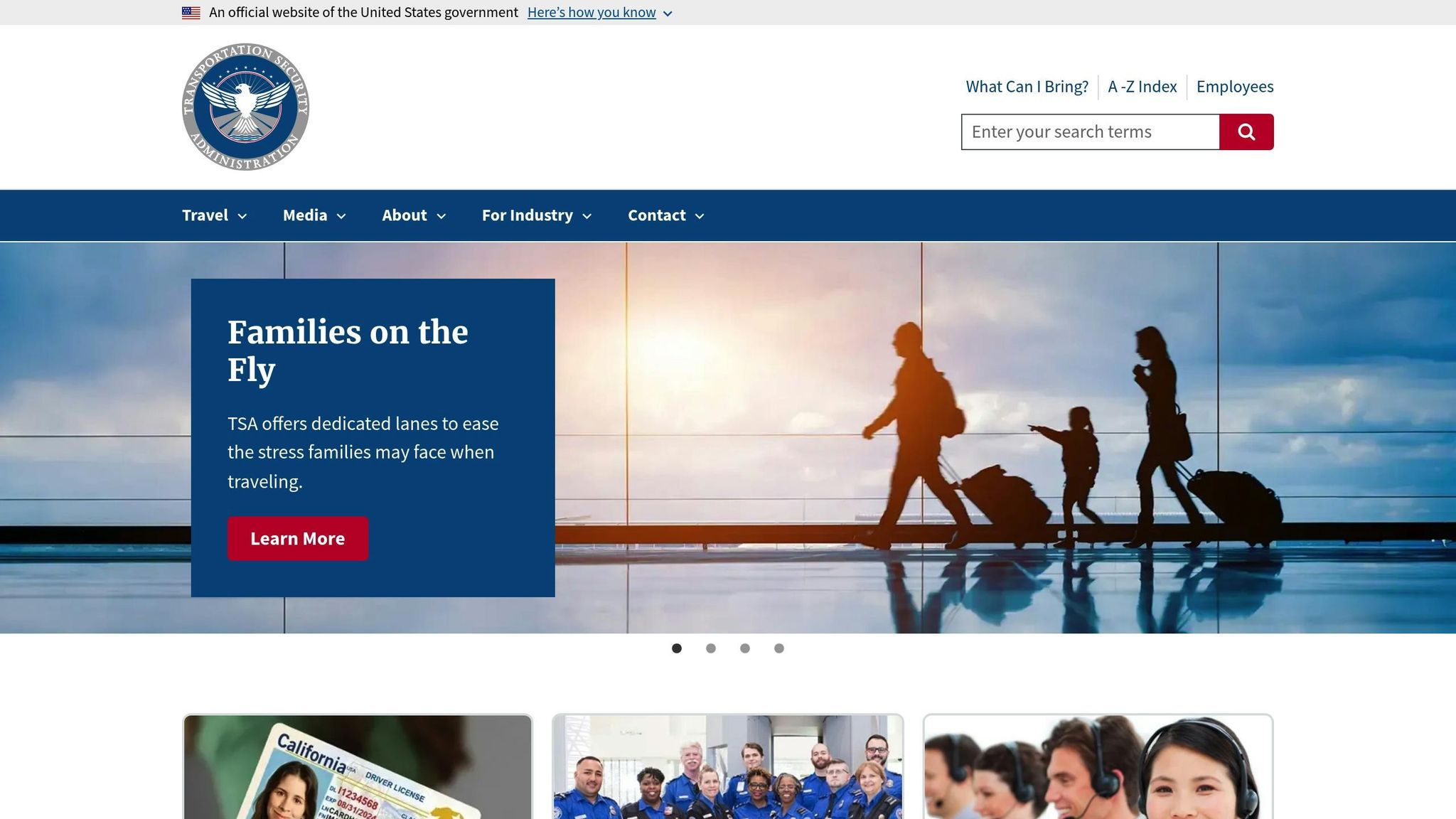
TSA Water Bottle Rules and Regulations
Navigating TSA rules for water bottles can make your security experience smoother and help you stay hydrated during your trip. These guidelines apply to all U.S. airports, with specific rules depending on whether you’re carrying items in your carry-on or checked luggage. Let’s break down the key points.
TSA 3-1-1 Liquid Rule for Water Bottles
The 3-1-1 rule is the foundation of TSA’s liquid regulations. Here’s what it means for your carry-on:
- Each liquid container must hold 3.4 oz (100 mL) or less.
- All containers must fit into a single quart-sized, clear plastic bag.
- Each passenger is allowed only one such bag.
For water bottles, this means that any bottle containing more than 3.4 oz of liquid will be confiscated at the security checkpoint. For perspective, a standard disposable water bottle holds about 16.9 oz (500 mL) - well over the limit.
But here’s the good news: empty water bottles of any size are allowed through security. Whether your bottle is plastic, stainless steel, or glass, TSA agents will inspect it to ensure it’s empty. Once you’re past security, you can refill it at a water fountain or hydration station.
Domestic vs. International Flight Requirements
TSA rules for water bottles are consistent across domestic U.S. flights and international departures from U.S. airports. The same 3-1-1 liquid restrictions apply regardless of your destination.
When traveling internationally, you’ll encounter TSA rules when departing the U.S., but security protocols may vary at your destination. Many countries follow similar liquid restrictions, limiting containers to 100 mL (3.4 oz). However, some airports abroad might have stricter or more relaxed rules, so it’s always a good idea to check the regulations for your destination.
If you’re connecting through international airports, you may need to go through security again, where local rules will apply. Transit passengers passing through U.S. airports from international flights must also adhere to TSA regulations if continuing on domestic or international flights from the U.S.
Checked Baggage Water Bottle Guidelines
You’re allowed to pack filled water bottles in your checked luggage. There’s no limit to the number of bottles you can bring, and the 3-1-1 rule doesn’t apply to checked bags. However, there are a few practical things to consider:
- Cargo holds can freeze. On long flights or at high altitudes, water bottles may freeze, causing them to crack or burst. This can create a mess in your luggage.
- Pack carefully. Place bottles in sealed plastic bags and cushion them with clothing to prevent leaks. Avoid packing liquids near electronics, documents, or anything that could be damaged by moisture.
Keep in mind that water is heavy. A single 16.9 oz bottle adds about 1 lb to your luggage weight, which could increase baggage fees if you exceed the airline’s weight limit.
Some travelers also pack empty bottles in their checked bags. This can be a smart backup option if you’re heading somewhere with questionable water quality or where bottled water is expensive.
Why Staying Hydrated During Air Travel is Difficult
Keeping yourself hydrated while flying is no easy task. Between TSA liquid restrictions, steep airport water prices, and the dry air inside the cabin, staying properly hydrated can feel like a losing battle. These obstacles aren’t just inconvenient - they can take a toll on your body during the flight.
Health Effects of Dehydration During Flights
The air inside airplane cabins is notoriously dry, with humidity levels much lower than what we’re used to on the ground. This dryness pulls moisture from your body, speeding up dehydration. On top of that, the reduced cabin pressure can further intensify fluid loss.
Dehydration during flights can lead to headaches, fatigue, dizziness, and trouble concentrating. You might notice your skin feeling uncomfortably dry, and your thirst may increase significantly. These symptoms tend to worsen the longer your flight lasts.
Drinks like coffee, tea, or alcohol can make things worse. Both caffeine and alcohol are diuretics, meaning they encourage your body to lose water, leaving you even more dehydrated.
Common Travel Hydration Problems
Beyond the physical effects, there are some logistical challenges that make staying hydrated while traveling even harder. For one, airport water prices can be shockingly high, which can quickly add up - especially if you're traveling with family. TSA rules also require you to ditch any liquids over 3.4 ounces before security, meaning you might have to toss a perfectly good bottle of water.
Once you’re on the plane, hydration doesn’t get much easier. Beverage services can be infrequent, and cramped seating makes it inconvenient to grab a drink or head to the lavatory. Many passengers even avoid drinking much water altogether, just to cut down on bathroom trips.
While some airports do offer free water through fountains or bottle-filling stations, these aren’t always easy to find. And when you do locate one, its upkeep might leave something to be desired. This uncertainty can make travelers hesitant to rely on these options for staying hydrated.
How to Stay Hydrated While Following TSA Rules
Staying hydrated during air travel is entirely possible without running afoul of TSA regulations. With a bit of planning, you can keep dehydration at bay from the moment you leave home to when you arrive at your destination.
Pack an Empty Water Bottle in Your Carry-On
TSA allows empty water bottles of any size in your carry-on, so feel free to bring a large 32-ounce bottle. Just make sure the bottle is completely empty when you go through security.
Choose a durable, leak-proof bottle that's easy to refill and clean. Stainless steel or BPA-free plastic bottles are great options, and wide-mouth designs make filling up at water stations and cleaning afterward a breeze. Some bottles even feature measurement markings to help you keep track of your water intake.
If space is tight, consider a collapsible silicone bottle. These save space in your bag and expand when you're ready to use them - perfect for travelers trying to pack light.
Use Airport Water Refill Stations
Once you've cleared security, finding a water refill station should be your next move. Many airports now have free, filtered refill stations conveniently placed near restrooms, food courts, and gate areas. Some even display how many plastic bottles have been saved, which is a nice bonus for eco-conscious travelers.
Use airport maps or apps to locate these stations quickly. This saves time and ensures you're not wandering around the terminal with an empty bottle.
If you can’t find a dedicated refill station, don’t hesitate to ask vendors at airport cafes or restaurants. Many will happily refill your bottle at no charge.
Stay Hydrated During the Flight
Once you're on the plane, stick to your hydration plan. Flight attendants are usually happy to refill your bottle if you ask. Don’t wait for the scheduled beverage service - request a refill whenever you need one.
When asking for water, request a full serving to ensure you have enough to last a while. Keep your water bottle handy and set a reminder to take a sip every 20–30 minutes, especially on flights longer than two hours.
It's also smart to drink water before you feel thirsty. Thirst is often a sign that you're already mildly dehydrated, which is common on flights due to the dry cabin air. A good rule of thumb is to aim for at least 8 ounces of water for every hour you're in the air.
For an extra hydration boost, pack some electrolyte packets in your carry-on. These can turn plain water into a more effective hydration solution. Just make sure the packets are kept in their original packaging to avoid any issues at security checkpoints.
sbb-itb-75eb6cf
Travel Water Bottles and Hydration Accessories
Flying can make staying hydrated a bit tricky, especially with TSA rules in place. The right travel water bottle can help you breeze through security while keeping your hydration routine intact.
What to Look for in Travel Water Bottles
First and foremost, TSA compliance is key. Your bottle should be able to empty completely to meet TSA guidelines. The good news? TSA doesn’t limit the size of an empty water bottle, so you can go for a larger option if that suits your needs.
Durability is another must-have, especially for frequent travelers. Stainless steel bottles are a popular choice because they’re tough enough to handle the bumps and jostles of travel. For those looking to take things up a notch, options like BLENDi combine hydration with nutrition, offering added convenience for life on the go.
BLENDi Water Bottles and Portable Blenders
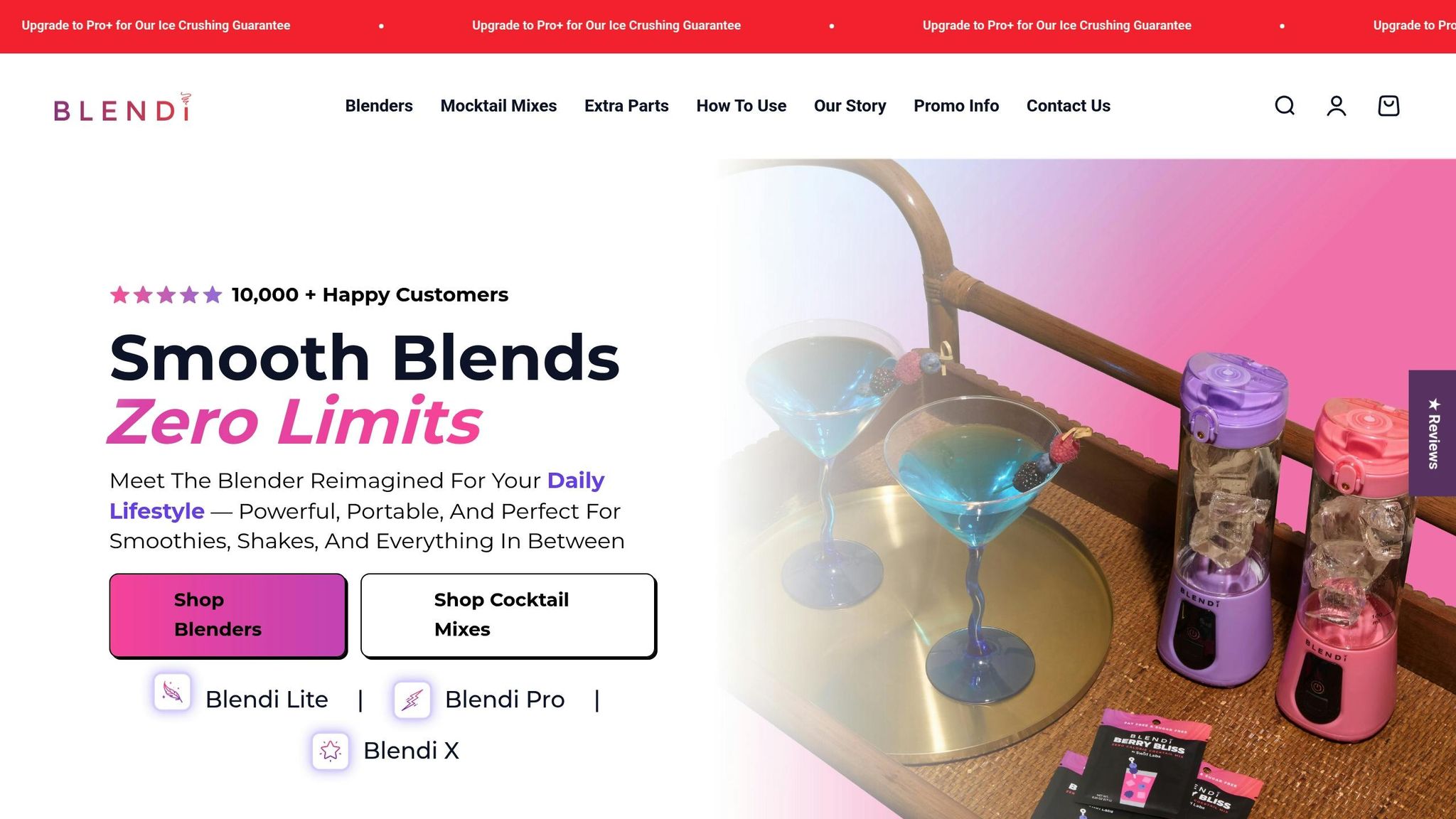
BLENDi’s portable blenders are a game-changer for travelers. They let you stay hydrated and whip up nutritious drinks, all while adhering to TSA rules.
The BLENDi Lite Portable Blender, priced at $22.50, is compact with a 17-ounce capacity - perfect for smoothies or protein shakes after you’ve cleared security. Its 70-watt motor can easily handle fruits and softer ingredients, making fresh drinks a breeze.
If you need more power, the Pro+ ($44.99) and BLENDi X ($59.99) are excellent options. Both can crush ice and double as travel bottles, with capacities of 17 ounces and 24 ounces, respectively. The BLENDi X, with its 150-watt motor and two blending modes, is ideal for creating different drink textures, especially on long-haul flights.
For added flavor, pair your blender with BLENDi's Skinny Mocktail Mixers ($18.50). These zero-calorie, zero-sugar drink mixes come in pre-measured packets that easily pass TSA checks. Just mix them with water to create a refreshing drink that caters to a variety of dietary needs.
Whether you’re blending electrolyte-packed smoothies or a quick protein shake, BLENDi products make it easy to stay hydrated and nourished while traveling. Designed with TSA-friendly features, they’re built to keep up with your on-the-go lifestyle.
Travel Hydration Options Comparison
Picking the right hydration solution for air travel boils down to your specific needs, travel habits, and preferences. Each type of bottle has its own perks, making it easier to stay hydrated while flying.
Travel Bottle Types and Features Comparison
Traditional stainless steel bottles are known for their durability and excellent temperature control. Many insulated versions can keep drinks cold for over eight hours or hot for up to 12 hours - perfect for long flights or layovers. The downside? They tend to be heavier, which can add weight to your carry-on. Some users also mention a slight metallic taste.
Collapsible water bottles are ideal for travelers looking to save space. Made from materials like silicone or TPU, these bottles can be folded or compressed when empty, making them super portable. However, they generally lack insulation, so drinks won’t stay cold or hot for long.
Insulated lightweight bottles, such as the Zojirushi Cool Bottle or Stanley AeroLight Transit Bottle, offer a middle ground. They balance effective temperature control with lighter weight. These bottles can maintain drink temperatures for hours and are often designed with convenience in mind. For example, the Hydro Flask with a straw cap makes one-handed drinking during flights a breeze.
Multi-functional hydration solutions, like BLENDi's portable blenders, are a game-changer for those who want more than just water. The BLENDi Lite ($22.50) is great for basic blending, while the BLENDi Pro+ ($44.99) and BLENDi X ($59.99) can crush ice. These devices double as travel bottles, holding 17 to 24 ounces, so you can whip up fresh smoothies, protein shakes, or electrolyte drinks after clearing TSA security.
| Bottle Type | Weight | Insulation | Durability | Space Efficiency | Special Features |
|---|---|---|---|---|---|
| Stainless Steel | Heavy | Excellent (8+ hrs) | Very High | Standard | Temperature retention, leak-proof |
| Collapsible | Very Light | None | Moderate | Excellent when empty | Folds flat, ultra-portable |
| Insulated Lightweight | Moderate | Good (6–8 hrs) | High | Standard | Balanced weight, effective insulation |
| BLENDi Blenders | Light–Moderate | None | High | Good | Blending capability, dual-purpose design |
When choosing a travel bottle, there are a few must-haves to keep in mind. A leak-proof design is crucial to avoid spills caused by cabin pressure changes. Easy cleaning and refilling are also key, especially if you’re hopping between multiple flights. Portability features like comfortable handles or compatibility with bag pockets can make a big difference on long travel days.
For travelers who value both hydration and nutrition, BLENDi's dual-purpose design is a standout option. You can also add BLENDi Skinny Mocktail Mixers ($18.50) - pre-measured, TSA-friendly packets with zero calories and zero sugar - to create custom drinks anywhere.
Ultimately, your choice depends on what matters most to you. Whether you prioritize temperature control, lightweight portability, space-saving features, or multi-functionality, there’s a travel hydration solution to fit your needs.
Summary: Travel Hydration Best Practices
Keeping hydrated during air travel doesn't have to be complicated. By understanding the TSA's 3-1-1 liquid rule and preparing in advance, you can stay refreshed and comfortable throughout your journey.
Start with an empty water bottle. Opt for a leak-proof design that can handle cabin pressure changes with ease. Once you've cleared security, take advantage of airport water refill stations. These stations, now common in major U.S. airports, not only save you money compared to pricey airport drinks but also ensure you're properly hydrated before takeoff.
For those who want more than plain water, there are advanced hydration solutions worth considering. Products like the BLENDi Lite Portable Blender ($22.50) provide a compact 17-ounce option for making smoothies on the go. If you need something with a bit more power, the Pro+ ($44.99) and BLENDi X ($59.99) models include ice-crushing capabilities and double as travel bottles.
Choose hydration tools based on your travel style. Business travelers often prefer lightweight, compact bottles that fit neatly into a laptop bag. Adventure seekers heading to areas with uncertain water quality might find bottles with built-in filtration essential. Fitness enthusiasts, on the other hand, may appreciate blender bottles for maintaining their nutrition routine while traveling.
Don't forget to replace electrolytes on long flights, especially if you're crossing multiple time zones. BLENDi's Skinny Mocktail Mixers ($18.50) are TSA-friendly, calorie-free, and sugar-free, making it easy to create custom hydration drinks wherever you go.
With a little planning, you can make hydration a seamless part of your travel routine. Whether you prefer a classic stainless steel bottle, a collapsible space-saving option, or a multi-functional blender bottle, having the right tools can make your flight more comfortable and help you arrive at your destination feeling refreshed. Plus, all the options mentioned comply with TSA guidelines.
FAQs
Can I take a reusable water bottle with a filter through TSA security?
Yes, you can take a reusable water bottle with a built-in filter through TSA security, but it needs to be completely empty when you pass through the checkpoint. After clearing security, you can fill it up at a water fountain or hydration station. It's a smart way to stay hydrated while traveling and avoid spending money on bottled water at the airport.
How can I keep my water bottle from leaking or freezing in checked luggage during a flight?
For leak prevention, make sure the bottle cap is tightly secured, then wrap it with plastic wrap or tape for added security. To take it a step further, place the bottle inside a sealed plastic bag. If you're worried about the bottle freezing, consider freezing it completely before your flight. TSA permits frozen bottles through security, provided they are entirely solid during screening. Using an insulated or double-walled bottle is another smart option - it not only helps prevent leaks but also keeps your water at a steady temperature while you travel.
What types of water bottles are best for air travel and TSA rules?
When flying, stainless steel and plastic water bottles are great choices - just make sure they’re completely empty when you go through TSA security. Both materials are sturdy, lightweight, and easy to refill once you’re past the checkpoint.
If staying hydrated during your trip is a must, opt for a reusable bottle that’s compact and designed for travel. Look for features like leak-proof lids or collapsible designs, which can make packing and carrying easier. Keep in mind, TSA rules prohibit liquids over 3.4 ounces (100 milliliters) in carry-on luggage. So, empty your bottle before security and refill it at a water station after clearing the checkpoint.

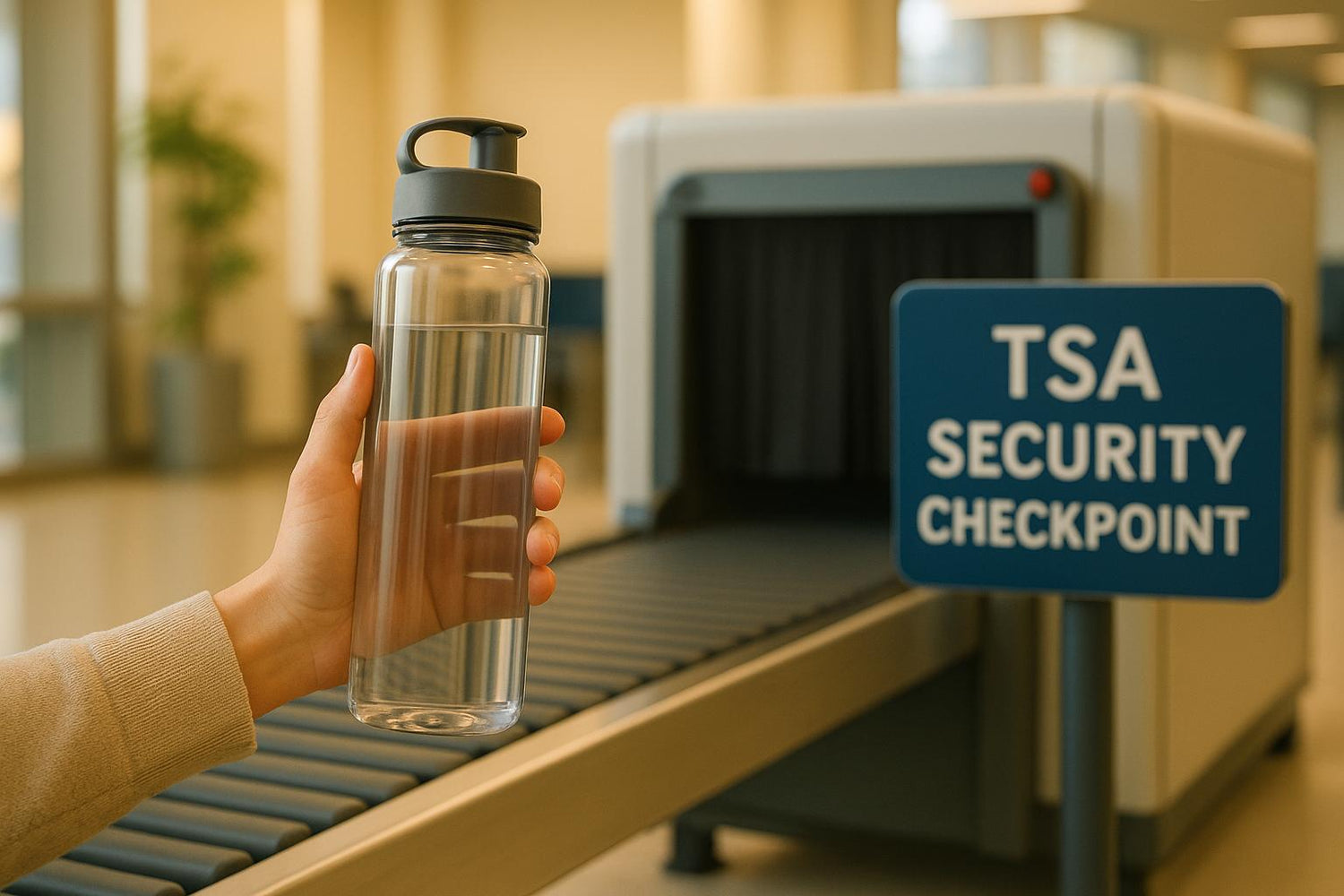
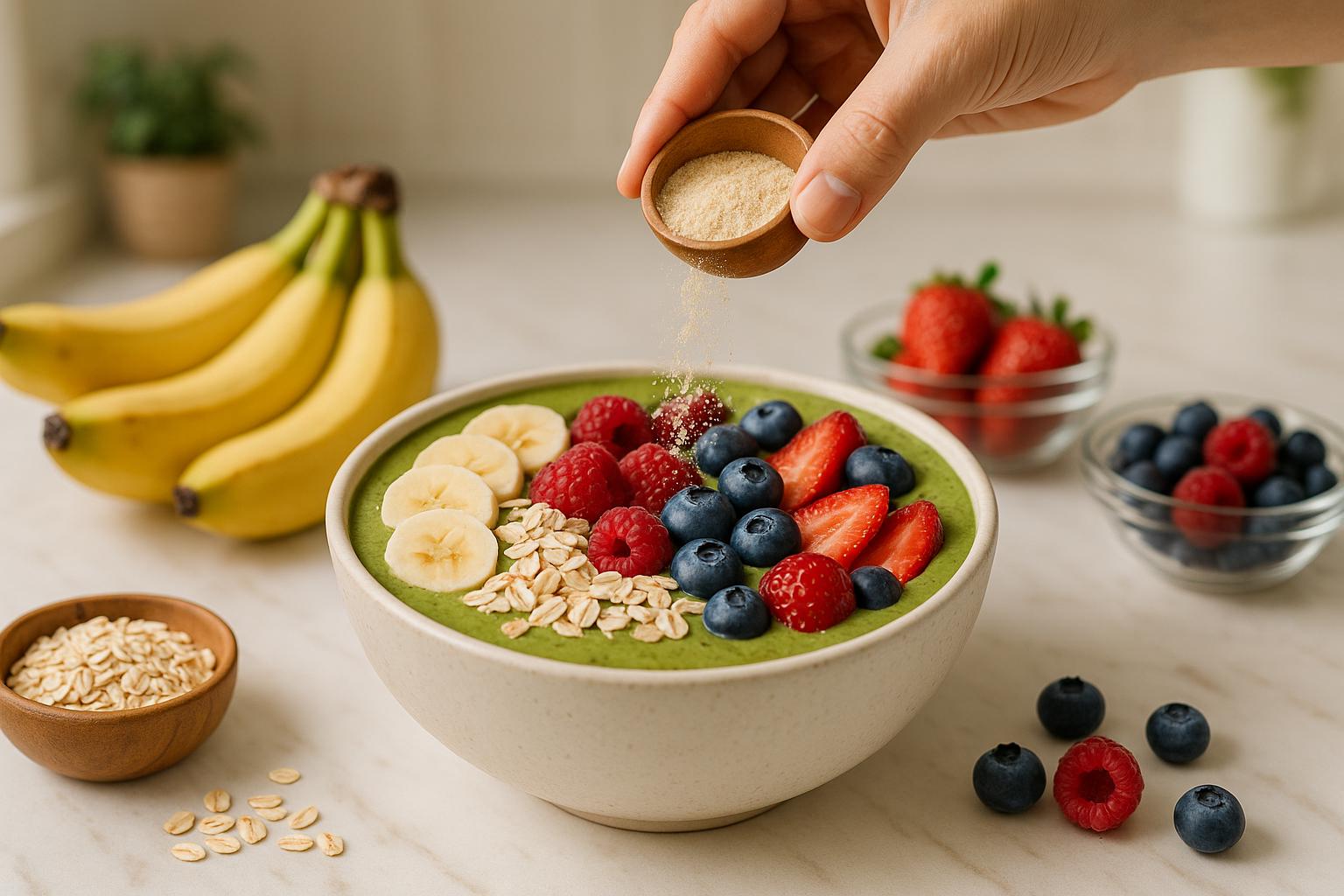
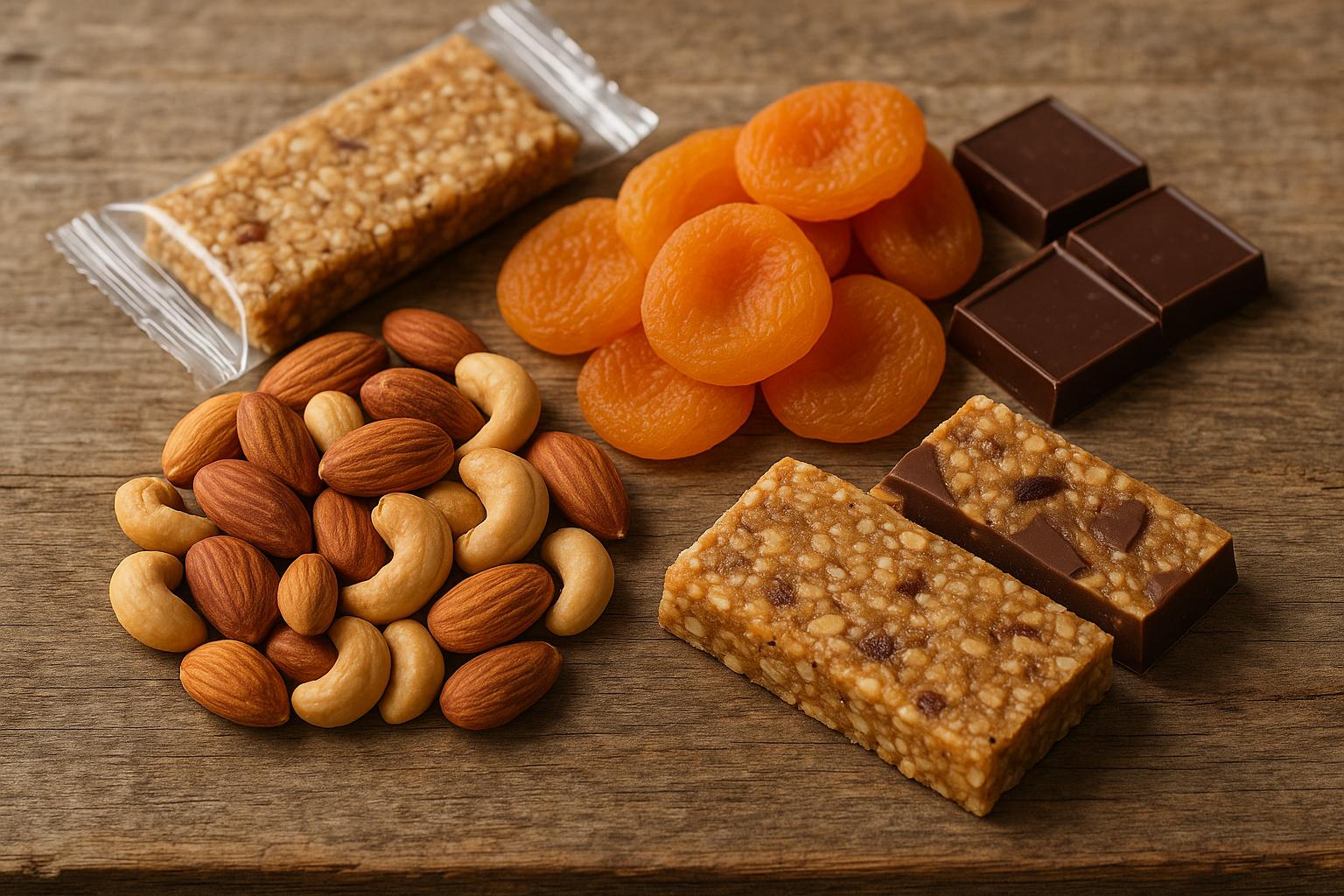
Leave a comment
This site is protected by hCaptcha and the hCaptcha Privacy Policy and Terms of Service apply.